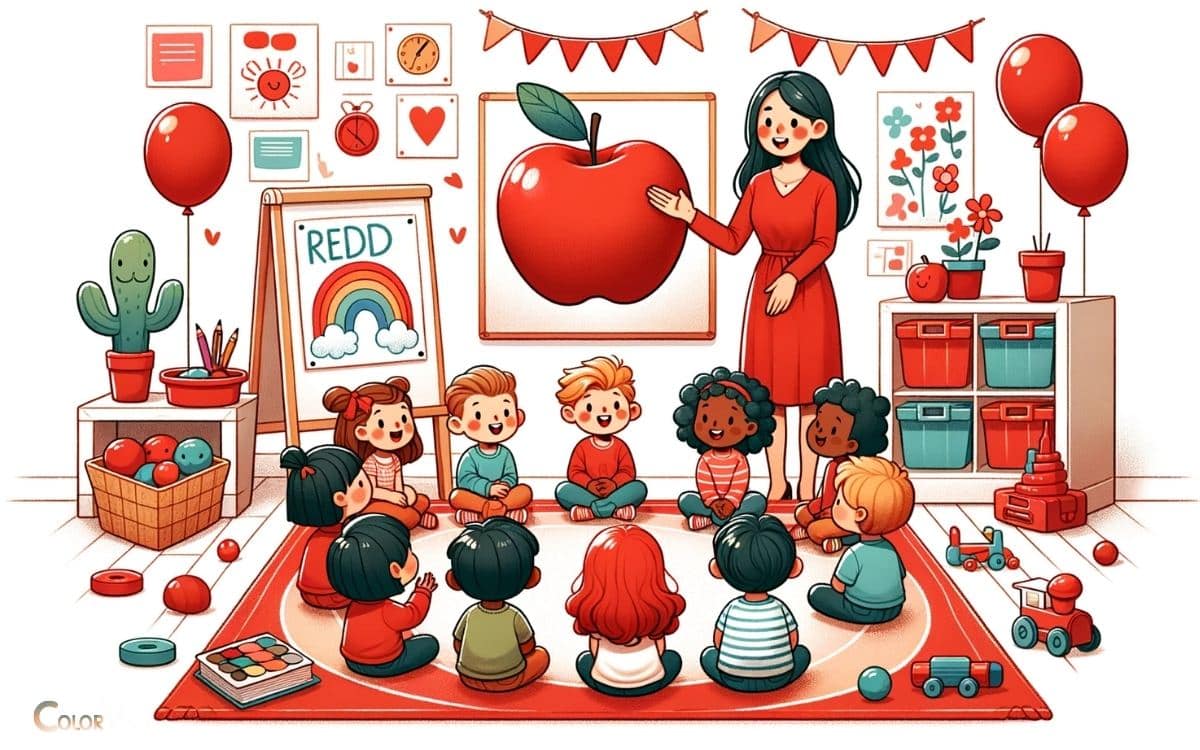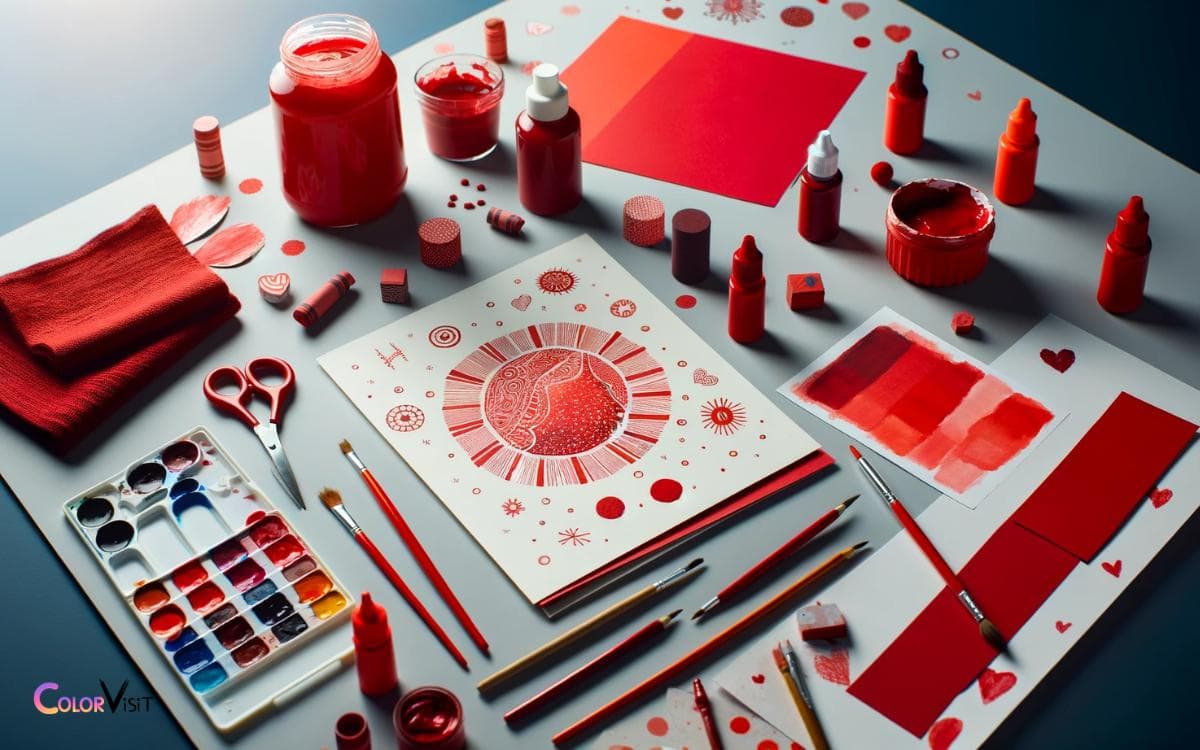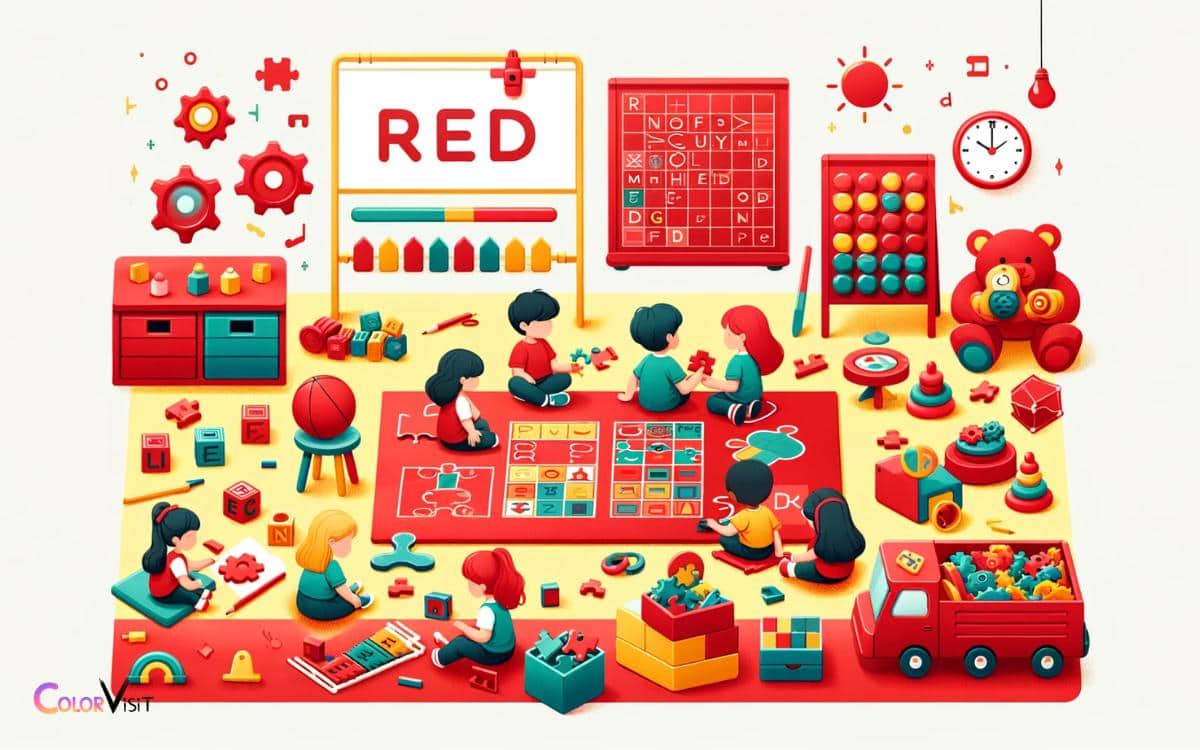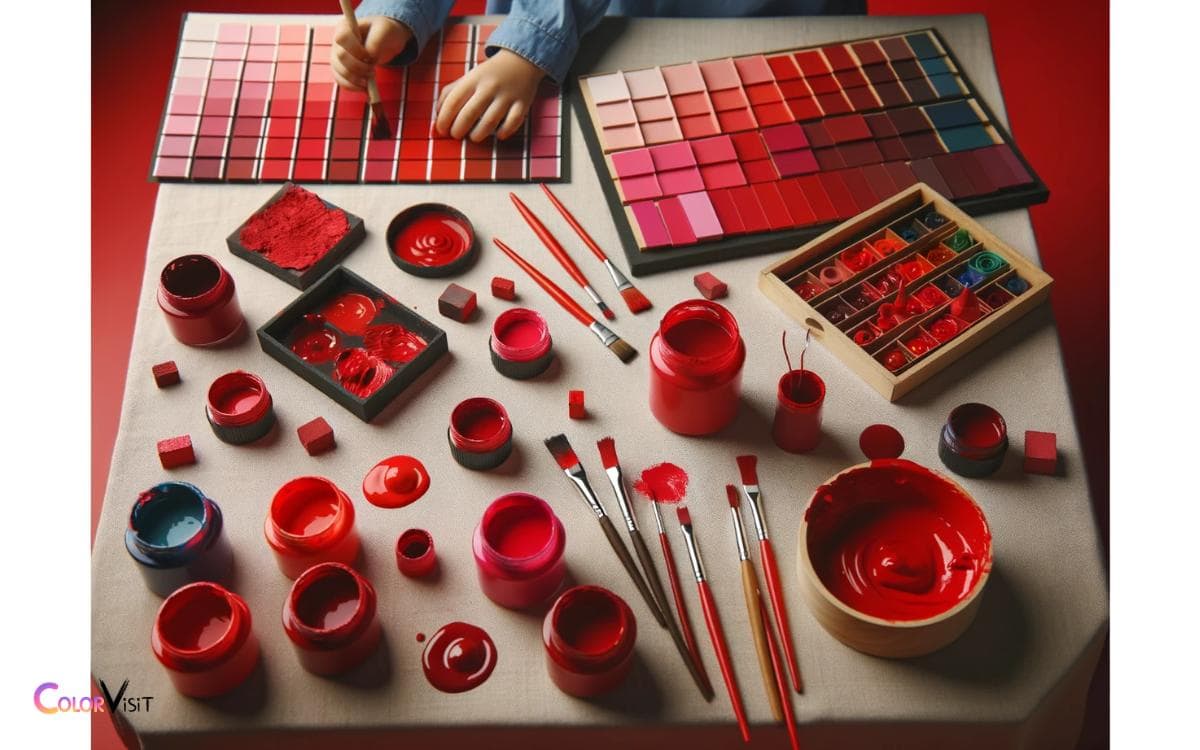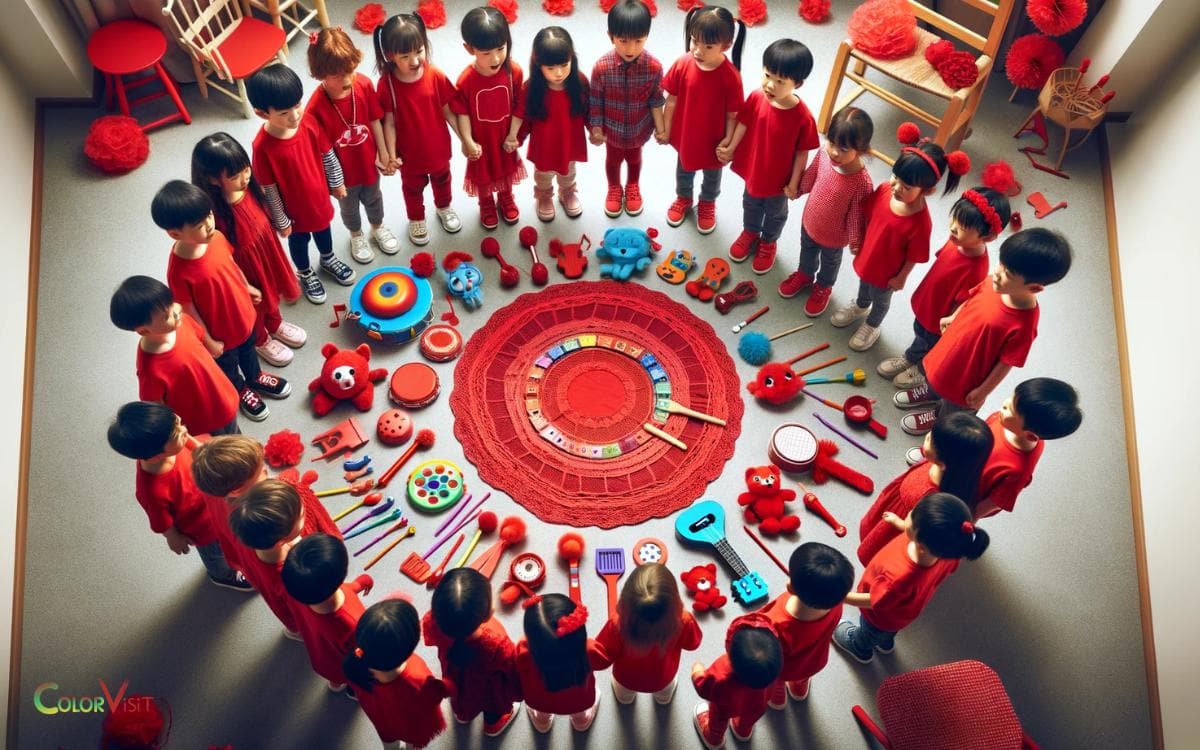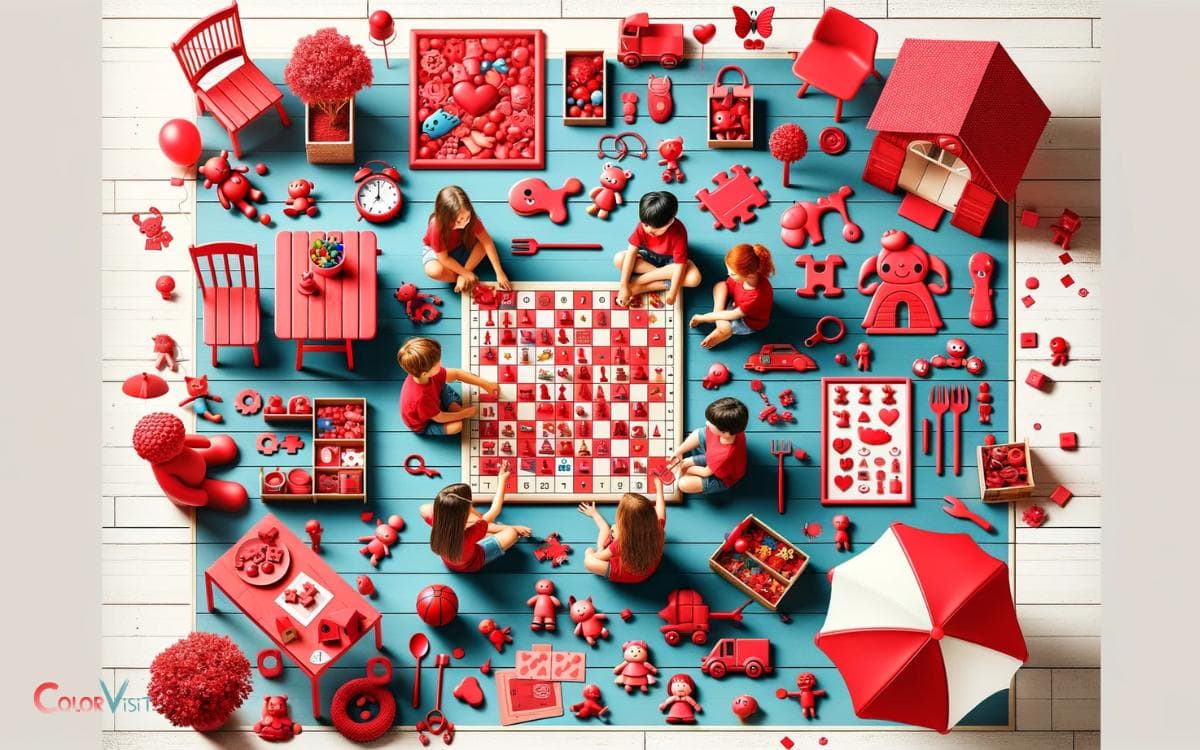Color Red Lesson Plans for Preschool: Cognitive Skills!
Teaching preschoolers about colors, specifically red, is crucial in their early development as it enhances their cognitive skills, creativity, and understanding of the world.
These innovative, engaging lessons encompass activities like sensory bins and art projects, story time sessions, and color mixing exercises, all designed to stimulate learning and creativity in preschoolers.
For instance, a sensory bin filled with red objects can stimulate curiosity and tactile learning. Similarly, an art project involving different shades of red can boost creativity and color recognition.
Embark on an educational adventure with our color red lesson plans, designed to spark creativity, enhance cognitive skills, and ignite a lifelong passion for learning among preschoolers.
Key Takeaway
Red Sensory Bins
One popular activity to engage preschoolers in exploring the color red is through the use of sensory bins. Red sensory bins offer a dynamic and hands-on approach to learning about the color red.
- By incorporating items such as red sand, red toys, and red fabric, children can explore the various shades and textures of red in a tactile and immersive manner.
- These bins provide an innovative way to stimulate the senses and facilitate cognitive development while fostering a love for learning.
- Through the use of red sensory bins, children can develop their fine motor skills, vocabulary, and color recognition.
This interactive and creative experience not only educates but also captivates young minds, making it an invaluable tool in early childhood education.
Art Projects With Red
We will discuss the exciting activities of red color mixing, creating a red object collage, and making vibrant red handprint art.
These engaging projects will not only encourage creativity but also help preschoolers learn about the color red in a hands-on and enjoyable way.
Red Color Mixing
When teaching preschoolers about red color mixing, it is important to provide engaging art projects that allow them to explore and experiment with this vibrant hue.
By incorporating innovative art projects, children can develop a deeper understanding of how red interacts with other colors.
Here are some exciting art projects for red color mixing:
- Red and Yellow Finger Painting: Encourage children to mix red and yellow paint with their fingers to discover how the two colors blend to create orange.
- Red Collage Creations: Provide various red materials such as tissue paper, fabric, and foam sheets for children to create collages, exploring different shades of red.
- Marble Painting with Red: Utilize a marble, red paint, and a shallow box to let children roll the marble through the paint and observe the vibrant patterns it creates.
- Red Color Wheel: Guide children in creating a color wheel using different shades of red, allowing them to see the various tones that can be achieved through mixing.
Red Object Collage
Preschoolers can create vibrant red object collages by arranging and gluing various red materials onto a backing, fostering creativity and fine motor skills.
- This art project encourages children to explore different textures, shapes, and shades of red, promoting sensory development.
- By incorporating materials such as red construction paper, tissue paper, buttons, ribbons, and beads, young learners can experiment with layering and composition.
- Encouraging children to collect and sort red objects for the collage also enhances their observational and categorization skills.
- Additionally, this activity provides an opportunity to discuss the significance of the color red in various contexts, such as nature, culture, and art.
Through this engaging and hands-on experience, preschoolers not only develop their artistic abilities but also gain a deeper understanding of the color red.
Red Handprint Art
Continuing our exploration of art projects with red, we transition from the red object collage to the engaging technique of red handprint art.
Red handprint art not only allows preschoolers to explore the color red in a tactile and interactive way but also provides a platform for creativity and self-expression.
Here are some innovative ideas to incorporate red handprint art into the preschool curriculum:
- Experiment with different shades of red paint to create depth and dimension in handprint art.
- Encourage children to use their handprints as a base to create imaginative creatures or objects using red paint and additional art supplies.
- Integrate learning by discussing the significance of the color red in various cultural contexts while creating handprint art.
- Explore the concept of symmetry by guiding children to create symmetrical handprint designs using red paint.
Red-themed Storytime
During red-themed storytime, preschoolers will engage in interactive storytelling activities centered around the color red.
- The goal is to captivate their imagination and immerse them in a world where the color red takes center stage.
- Through innovative storytelling techniques, educators can bring to life characters, objects, and adventures that revolve around the vibrant hue.
- This could include reading books like ‘Red is Best’ by Kathy Stinson or ‘Clifford the Big Red Dog’ by Norman Bridwell, and then encouraging the children to participate in discussions about the red elements in the stories.
- Additionally, incorporating interactive props and visuals, such as red puppets or felt cutouts, can further enhance the storytelling experience.
By infusing creativity into the storytelling process, children not only learn about the color red but also develop a love for storytelling and imaginative thinking.
Learning Red Through Play
Engaging in red sensory activities and organizing a red color hunt are effective ways for preschoolers to learn about the color red through play.
These activities not only help children recognize the color red but also enhance their sensory perception and fine motor skills.
Incorporating play into the learning process makes it enjoyable and memorable for young learners.
Red Sensory Activities
Sensory activities provide preschoolers with hands-on experiences that engage their senses and help them learn about the color red through play.
By incorporating red sensory activities into lesson plans, educators can offer innovative ways for children to explore and understand the significance of the color red.
Here are some exciting red sensory activities:
- Red Sensory Bins: Create sensory bins filled with red items such as toy apples, red fabric, and dyed rice to encourage tactile exploration.
- Scented Red Playdough: Make red playdough with a fruity scent, such as strawberry or cherry, to engage both the sense of touch and smell.
- Red Sensory Walk: Set up a sensory walk with various textures in shades of red for children to walk on barefoot, promoting sensory stimulation.
- Red Sensory Bottles: Fill clear bottles with red liquid and glitter to create calming sensory bottles that captivate visual senses.
Red Color Hunt
The transition from the previous subtopic of red sensory activities to the current subtopic of ‘Red Color Hunt (Learning Red Through Play)’ involves integrating the concept of red exploration into an interactive, educational game for preschoolers.
In the Red Color Hunt, children actively seek out various red items, fostering observation and recognition skills. Here’s a table to guide the hunt:
| Red Color Hunt Items | Location |
|---|---|
| Red apples | Kitchen |
| Red blocks | Play area |
| Red crayon | Art corner |
| Red ball | Outdoor area |
| Red book | Reading nook |
Red Color Mixing
Preschoolers can explore red color mixing through simple and engaging hands-on activities. By experimenting with different shades and hues, they can develop a deeper understanding of the color red.
Here are four innovative ways to introduce red color mixing to preschoolers:
- Primary Color Mixing: Encourage children to mix red with other primary colors (blue and yellow) to create secondary colors (purple and orange).
- Colorful Sensory Bins: Set up sensory bins with red-colored items and encourage children to mix different materials to create new shades of red.
- Painting Exploration: Provide various shades of red paint and different tools for mixing and blending, such as sponges, brushes, and even fingers.
- Colorful Science Experiments: Conduct simple science experiments using red food coloring and water to demonstrate color mixing principles.
Red Songs and Rhymes
Songs and rhymes about the color red can be incorporated into preschool lesson plans to engage young learners in a fun and interactive way.
- By integrating music and rhythm, children can develop a deeper connection to the concept of the color red.
- For instance, a simple rhyme like ‘R-E-D, red is what I see. It’s the color of an apple, as red as can be!’ can be accompanied by hand movements or dance, making the learning experience more memorable.
- Incorporating songs such as ‘The Red Song’ or ‘Little Red Wagon’ can further reinforce the identification and understanding of the color red.
- These activities not only make learning enjoyable but also enhance children’s cognitive and linguistic development.
Additionally, they provide a platform for creativity and self-expression, fostering a positive attitude towards learning.
Red Games and Activities
Engage young learners in the concept of the color red through interactive games and activities designed to enhance their understanding and appreciation of this vibrant hue.
- Red Light, Green Light: Adapt the classic game by having children freeze when the ‘red’ light is called out.
- Sorting Red Objects: Encourage children to bring in red items from home and have a group sorting activity.
- Red Color Hunt: Take the children on a scavenger hunt to find as many red objects as possible.
- Painting with Red: Provide various shades of red paint for the children to create their own red masterpieces.
These activities not only reinforce color recognition but also promote cognitive development, social interaction, and creativity.
Conclusion
The color red can ignite a spark of creativity and curiosity in young minds.
Through sensory bins, art projects, storytime, play, color mixing, songs, and games, preschoolers can explore the vibrant world of red.
By engaging in these activities, children can develop a deeper understanding and appreciation for the color red, sparking a passion for learning and exploration that will continue to grow and flourish.
